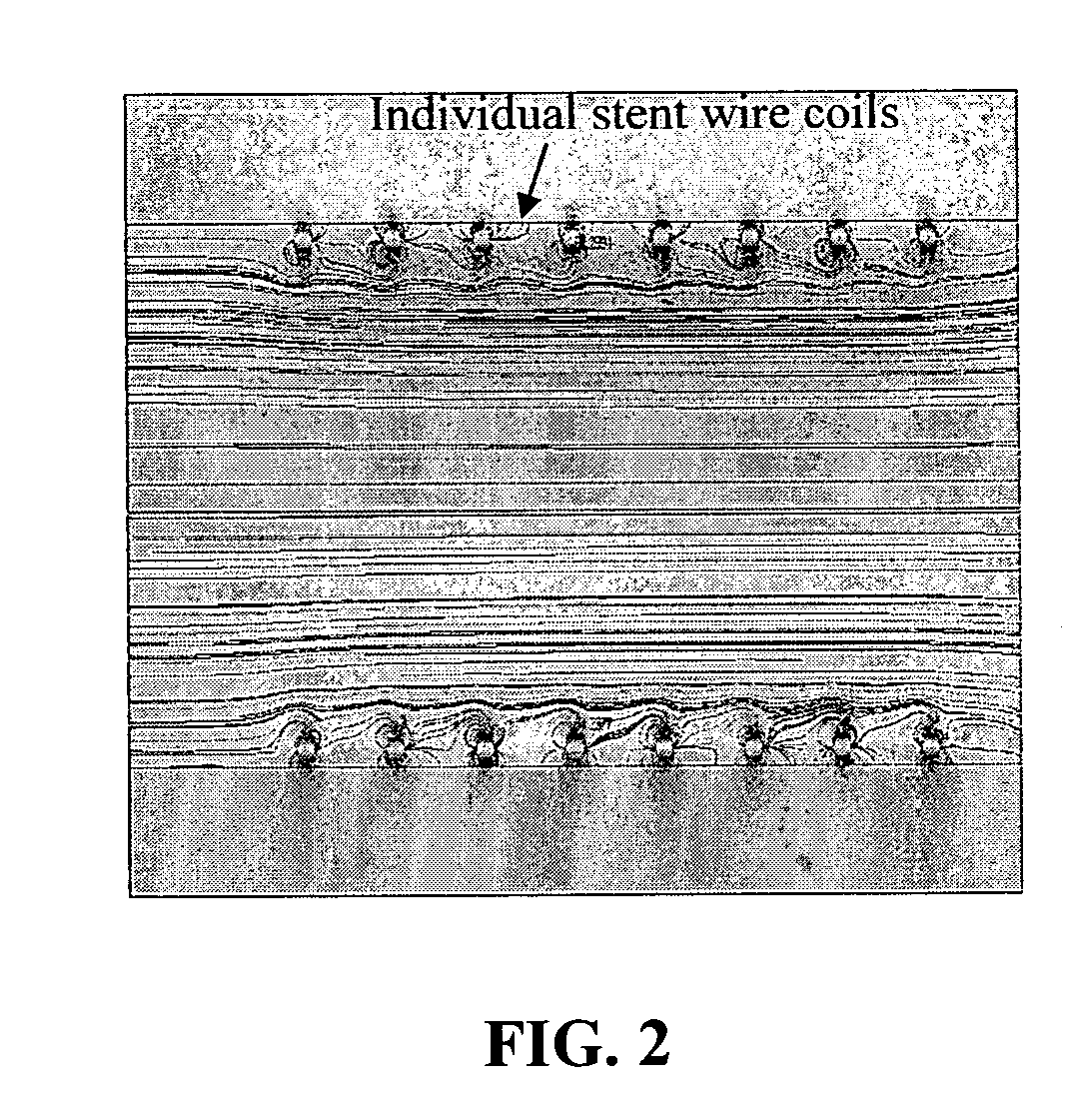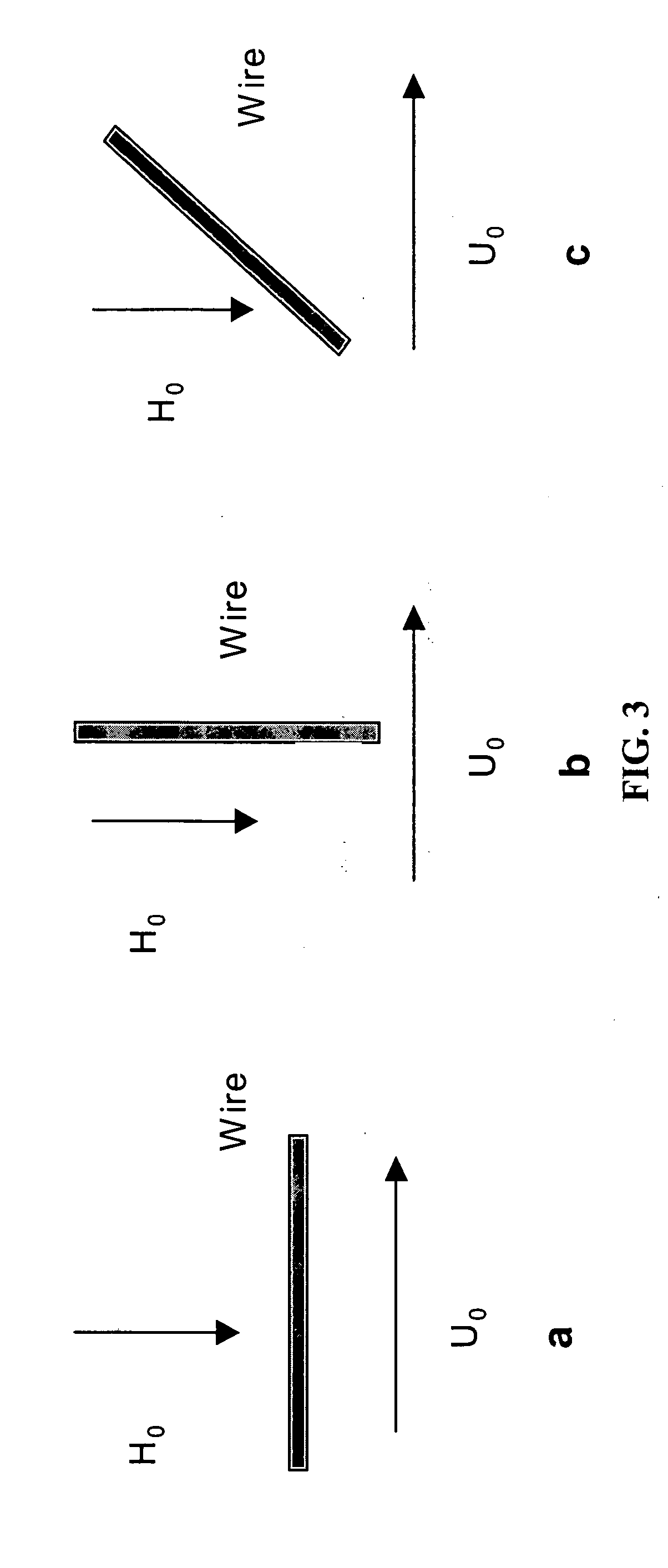Magnetic particle-based therapy
a technology of magnetic particle and ion exchange, which is applied in the direction of capsule delivery, microcapsules, other medical devices, etc., can solve the problems of inability to change the choice and delivery mode of drugs, uncontrollable drug-release pharmacokinetics, and inability to deliver more than one medication
- Summary
- Abstract
- Description
- Claims
- Application Information
AI Technical Summary
Benefits of technology
Problems solved by technology
Method used
Image
Examples
example 1
[0144] In vitro sequestration of a biotinylated enzyme from simple fluids and whole rat blood was performed under static and dynamic flow conditions. Particles were composed of nanocrystalline magnetite encapsulated in monodisperse polystyrene nanospheres. Several variations were tested, including various PEG length (MW 330-6000) and particle size (250-3000 nm). Streptavidin, the model receptor, was either bonded to the carboxylated terminal group of the PEG or attached directly to the nanoparticle surface. Biotinylated horseradish peroxidase (HRP) was used as the model “toxin.” The results shown in FIG. 1 indicate a reduction of the free enzyme to about 50% maximum levels in the blood in all tests. Equilibrium was reached within 20-30 minutes. The experiment demonstrates the operability of the methods and systems for deleterious substance removal / sequestration in vitro. Additional investigation, described e.g., in Example 2, demonstrates the operability of the invention in an in vi...
example 2
[0145] In vivo experiments, performed on retired breeder rats, included a) the design of a closed loop, adjustable flow, blood re-circulation unit permitting blood turn over and sampling over several hours in the live animal; b) kinetic studies of several candidate magnetic nanoparticles and toxins; and c) magnetic filtration experiments. In the latter investigations, continuous extracorporeal blood circulation was achieved via carotid-jugular cannulation and external pump support with filtration of magnetic nanoparticles using 1-mm diameter closed-loop tubing and a single NdFeB magnet (0.4 T at surface, 18 mm diameter). Experimental results on toxin sequestration from the rat are consistent with the in vitro data. In this experiment, a rat was injected with 15 μg HRP. After 5 minutes, 10 mg of streptavidin-coated magnetic particles (magnetite-embedded polystyrene, 400 nm) conjugated with PEG 2000 were injected. The results show a 50% reduction of HRP in the rat serum after 20 minut...
example 3
[0146] A stent of paramagnetic metal comprising eight coils, internal radius 2.5 mm, was prepared and placed into a plastic tube submerged in decalin, thereby matching the index of refraction so that a clear image can be captured. A permanent NdFeB magnet was placed against the tube adjacent to the wire coils. Non-porous magnetic particles containing 80% magnetite (w / w), 2.0 mm radius, were suspended in a fluid that flowed through the stent at 0.8 ms−1. The NdFeB magnet-induced a magnetic field of 1.0 T perpendicular to the fluid flow and the long axis of the stent, resulting in capture of the magnetic particles, as illustrated in FIG. 2. Under our direction, the University of South Carolina conducted analyses of the results of this experiment, using Femlab, a commercially available magnetic field-fluid flow model. The magnetic particle capture efficiency was 26%.
[0147] To better understand the capture of magnetic particles by a magnetizable stent, a computational model was develop...
PUM
 Login to View More
Login to View More Abstract
Description
Claims
Application Information
 Login to View More
Login to View More - R&D
- Intellectual Property
- Life Sciences
- Materials
- Tech Scout
- Unparalleled Data Quality
- Higher Quality Content
- 60% Fewer Hallucinations
Browse by: Latest US Patents, China's latest patents, Technical Efficacy Thesaurus, Application Domain, Technology Topic, Popular Technical Reports.
© 2025 PatSnap. All rights reserved.Legal|Privacy policy|Modern Slavery Act Transparency Statement|Sitemap|About US| Contact US: help@patsnap.com



